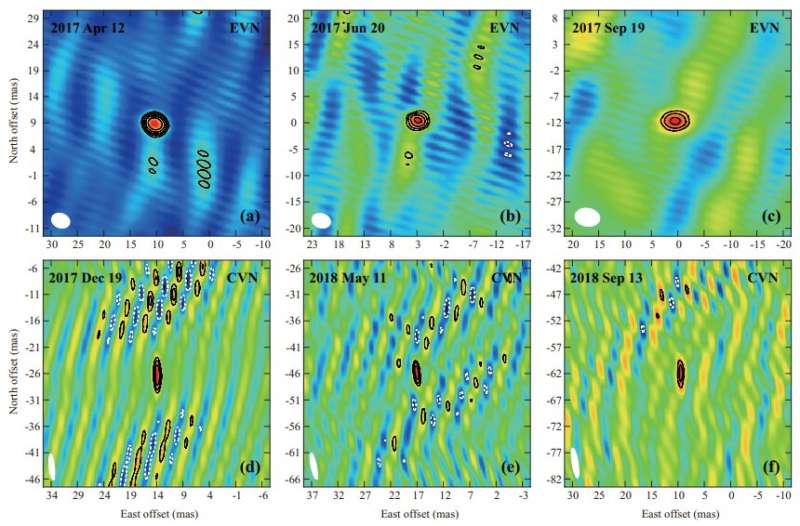This article has been reviewed according to Science X's editorial process and policies. Editors have highlighted the following attributes while ensuring the content's credibility:
fact-checked
peer-reviewed publication
trusted source
proofread
Researchers realize very long baseline interferometry astrometric measurements on white dwarf pulsar AR Scorpii

An international research team led by Dr. Cui Lang from the Xinjiang Astronomical Observatory of the Chinese Academy of Sciences has imaged the compact weak radio emission region and measured the astrometric parameters with high precision for the radio star AR Scorpii (AR Sco), by using multi-epoch Very Long Baseline Interferometry (VLBI) observations.
The results were published in Monthly Notices of the Royal Astronomical Society.
VLBI astrometric observations of radio stars can validate the quality of Gaia Celestial Reference Frame (GCRF) and help to improve the accuracy and robustness of the link between the International Celestial Reference Frame (ICRF) and GCRF.
AR Sco is the only-known radio-pulsing white dwarf binary to date, consisting of a rapidly rotating magnetic white dwarf and a M-type main-sequence star. It has a broadband spectrum and unusual pulsations detected at the radio, infrared, optical, and ultraviolet bands.
To determine the astrometric parameters of AR Sco at radio band independently, the researchers conducted multi-epoch VLBI phase-referencing observations with the European VLBI Network (EVN), the Chinese VLBI Network (CVN), and the New Zealand Warkworth 30-m telescope.
Besides the primary calibrator, an additional weak extragalactic source, very close to the target AR Sco, played a key role as a secondary calibrator for phase-referencing to improve the astrometric precision.
"We detected the compact radio emission and provided high-precision astrometric measurements for AR Sco," said Dr. Cui.
This work provides new and independent astrometric results to validate the Gaia results for AR Sco. Based on the astrometric results, the researchers analyzed the kinematics of AR Sco and found that the Galactic space velocities of AR Sco were quite consistent with that of both intermediate polars (IPs) and polars.
Furthermore, they estimated the upper limit of the radio-emitting region size of AR Sco and suggested that the radio emission should be located within the light cylinder of its white dwarf.
More information: Pengfei Jiang et al, VLBI astrometry on the white dwarf pulsar AR Scorpii, Monthly Notices of the Royal Astronomical Society (2023). DOI: 10.1093/mnras/stad327. On arXiv: arxiv.org/abs/2301.13470
Journal information: Monthly Notices of the Royal Astronomical Society , arXiv
Provided by Chinese Academy of Sciences




















